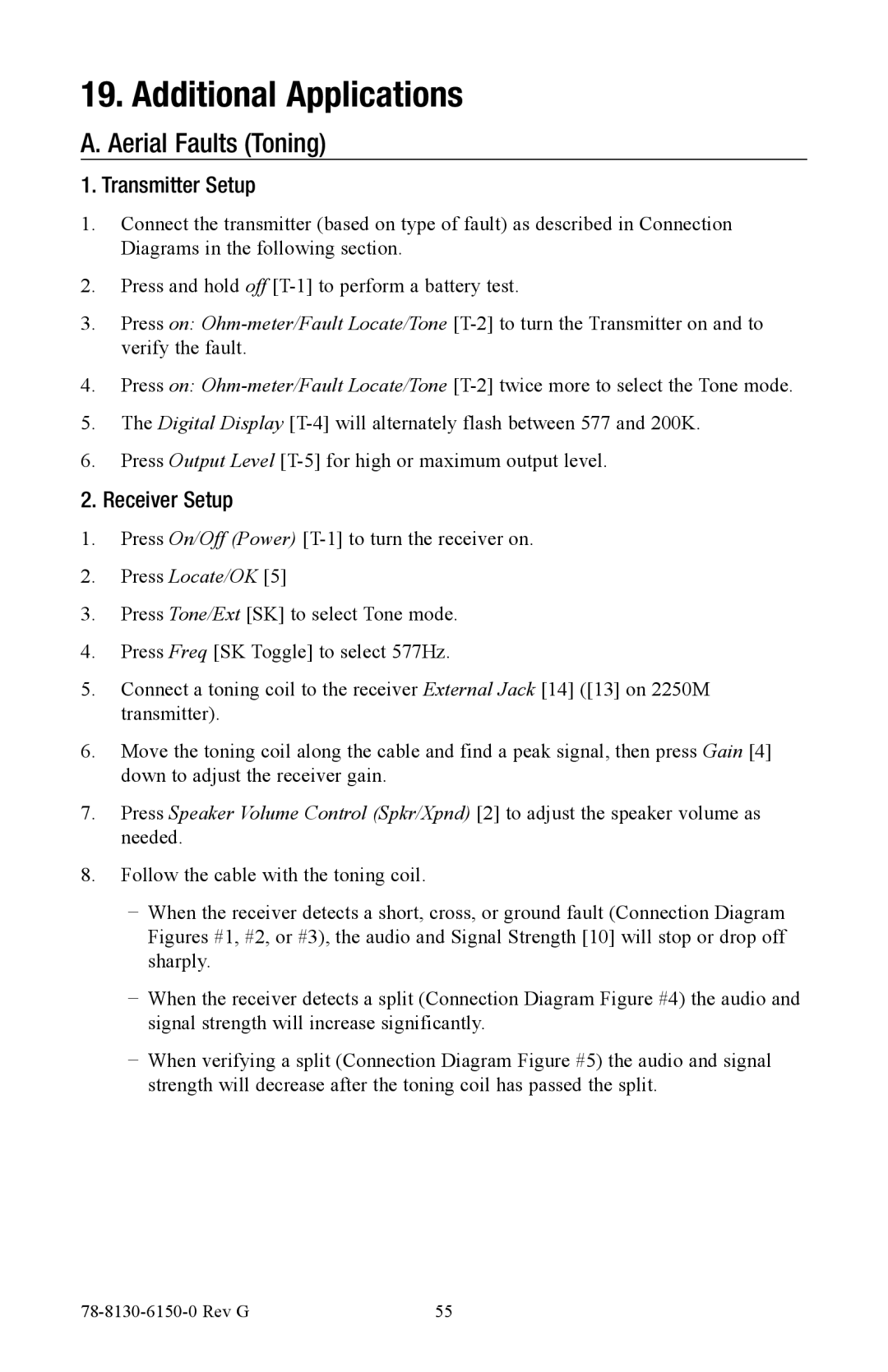19. Additional Applications
A. Aerial Faults (Toning)
1. Transmitter Setup
1.Connect the transmitter (based on type of fault) as described in Connection Diagrams in the following section.
2.Press and hold off
3.Press on:
4.Press on:
5.The Digital Display
6.Press Output Level
2. Receiver Setup
1.Press On/Off (Power)
2.Press Locate/OK [5]
3.Press Tone/Ext [SK] to select Tone mode.
4.Press Freq [SK Toggle] to select 577Hz.
5.Connect a toning coil to the receiver External Jack [14] ([13] on 2250M transmitter).
6.Move the toning coil along the cable and find a peak signal, then press Gain [4] down to adjust the receiver gain.
7.Press Speaker Volume Control (Spkr/Xpnd) [2] to adjust the speaker volume as needed.
8.Follow the cable with the toning coil.
−− When the receiver detects a short, cross, or ground fault (Connection Diagram Figures #1, #2, or #3), the audio and Signal Strength [10] will stop or drop off sharply.
−− When the receiver detects a split (Connection Diagram Figure #4) the audio and signal strength will increase significantly.
−− When verifying a split (Connection Diagram Figure #5) the audio and signal strength will decrease after the toning coil has passed the split.
| 55 |
